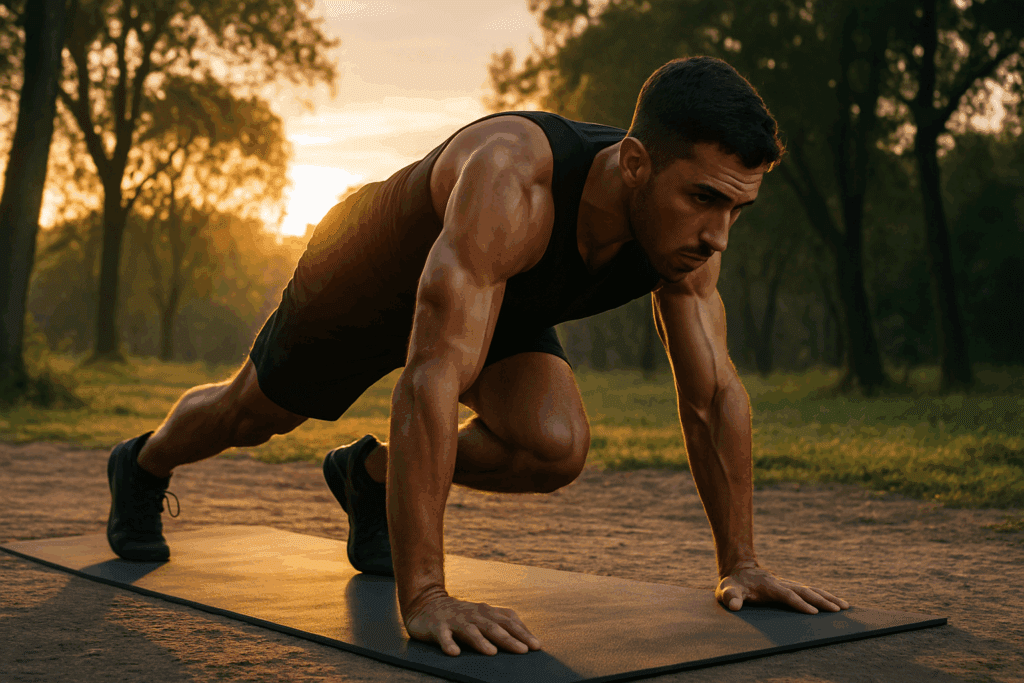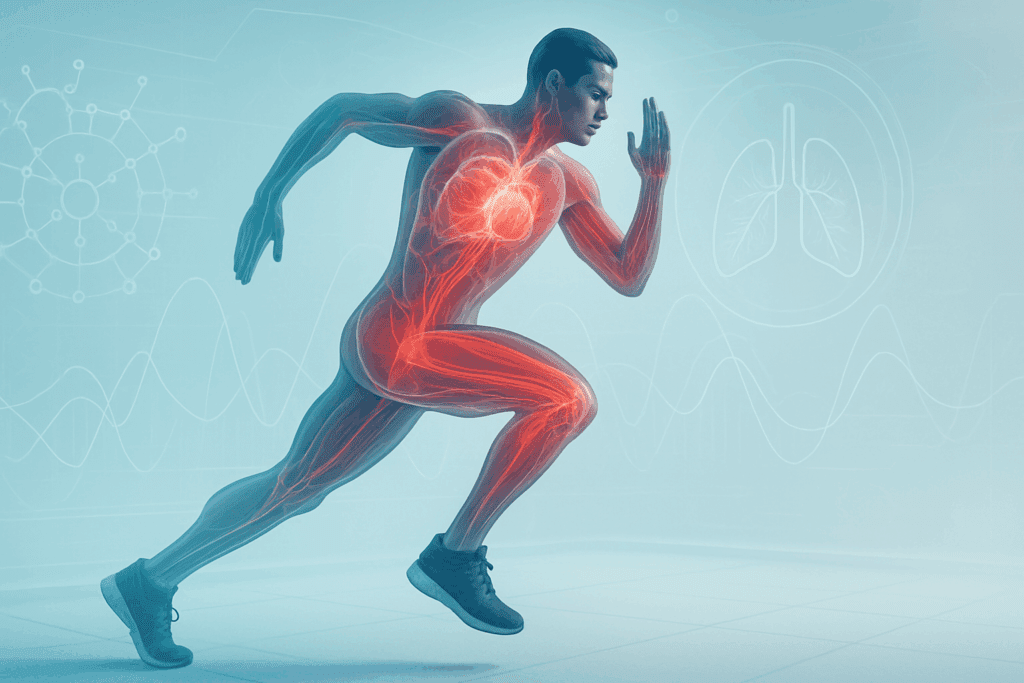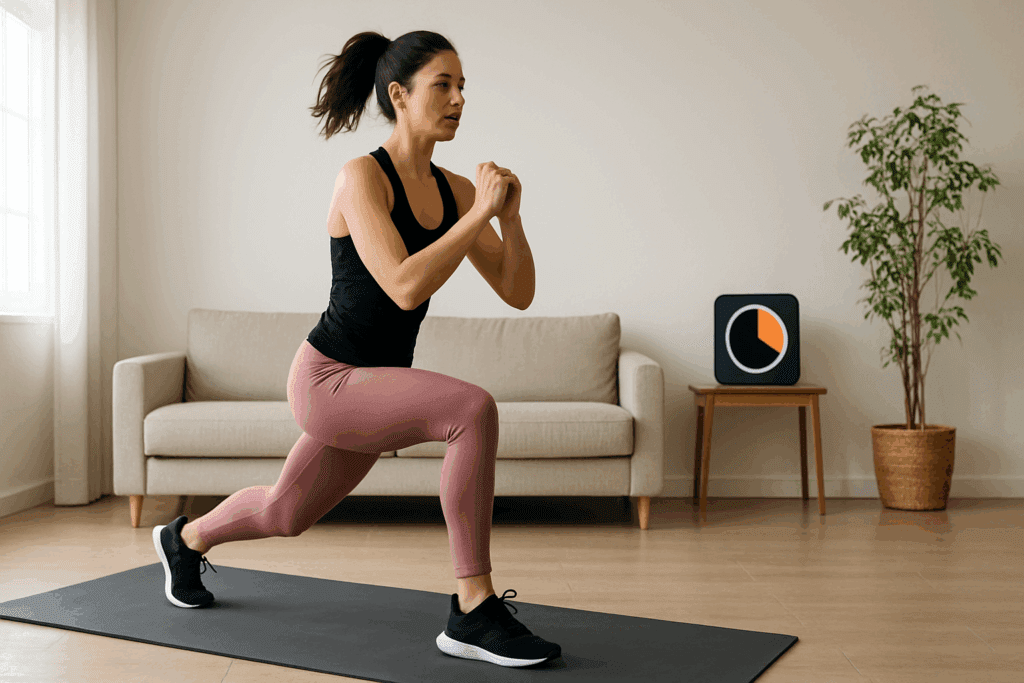Unlocking the Power of High Intensity Bodyweight Training
In recent years, the fitness community has seen a dramatic shift toward more efficient, accessible, and equipment-free workouts. Among these, high intensity bodyweight exercises have emerged as a leading strategy for individuals seeking to maximize fat burn and enhance cardiovascular endurance. These movements require no gym membership, no bulky machines, and no expensive gear. Instead, they leverage one simple tool: your body. When executed correctly and consistently, they can rival—and often surpass—the effectiveness of traditional weight training or steady-state cardio routines.
What sets high intensity bodyweight exercises apart is their ability to activate multiple muscle groups simultaneously, boosting calorie expenditure while challenging balance, coordination, and agility. They allow for scalability and modification, making them suitable for both beginners and seasoned athletes. From a scientific standpoint, this training style promotes a potent physiological response that includes improved mitochondrial density, increased oxygen uptake, and elevated post-exercise oxygen consumption (EPOC), commonly referred to as the “afterburn effect.” This means your body continues to burn calories long after the workout is over. It is this combination of accessibility, efficiency, and metabolic impact that makes high intensity bodyweight training a powerful approach for enhancing both endurance and fat loss.
You may also like: How to Increase Stamina and Endurance Naturally: Smart Training Tips and Nutrition Habits That Support Cardiovascular Fitness

The Science Behind Bodyweight HIIT Routines
High-Intensity Interval Training (HIIT) has been extensively studied for its profound metabolic benefits, and when combined with bodyweight movements, the results can be remarkable. A bodyweight HIIT routine involves alternating bursts of maximum-effort exercise with short periods of rest or low-intensity activity. This interval structure not only keeps the heart rate elevated but also stimulates both aerobic and anaerobic energy systems. The dual activation results in greater cardiovascular conditioning and muscle endurance.
Research published in the Journal of Sports Science and Medicine has shown that HIIT significantly improves VO2 max, an important indicator of cardiovascular fitness. Additionally, studies confirm that HIIT sessions—especially those incorporating compound bodyweight exercises such as burpees, jump squats, and mountain climbers—can burn more calories in a shorter timeframe compared to moderate-intensity workouts of longer duration. This efficiency makes bodyweight HIIT particularly appealing for individuals with tight schedules or those seeking to minimize gym time without sacrificing results.
The science also underscores the hormonal and cellular adaptations triggered by high intensity training. These include enhanced insulin sensitivity, increased human growth hormone (HGH) levels, and improved muscle oxidative capacity. When a bodyweight HIIT routine is properly structured, it not only leads to a leaner physique but also fortifies cardiovascular health and boosts stamina—critical components of performance enhancement.
Designing a Bodyweight HIIT Routine for Maximum Impact
To reap the full benefits of high intensity bodyweight exercises, it is essential to structure your routine intelligently. A balanced bodyweight HIIT routine should address all major muscle groups while incorporating exercises that elevate the heart rate and challenge muscular endurance. Each session should begin with a dynamic warm-up to increase core temperature and prime the body for explosive movement. Examples include arm circles, leg swings, and light jogging in place.
An effective routine may consist of five to seven exercises performed in 30 to 45-second intervals, followed by 15 to 30 seconds of rest. Common movements include jump lunges, push-up to plank transitions, squat jumps, high knees, and tuck jumps. These exercises combine cardio and strength elements, allowing for a comprehensive workout in under 30 minutes. Between rounds, a one-minute recovery can help maintain intensity without compromising form.
Progression is crucial for continued improvement. As your conditioning improves, you can increase interval durations, reduce rest times, or add rounds to your routine. Advanced variations such as plyometric push-ups, pistol squats, or handstand holds can be introduced to maintain challenge and variety. Keeping a log of your routines and perceived exertion can also help monitor progress and prevent plateaus. Ultimately, personalization is key—what works for one individual may need to be modified for another based on fitness level, goals, and physical limitations.

The Endurance-Building Benefits of High Intensity Bodyweight Exercises
While weightlifting and distance running have long been the staples of endurance training, high intensity bodyweight exercises offer a highly effective alternative that often produces faster and more versatile results. The dynamic nature of these movements enhances muscular and cardiovascular endurance simultaneously. Exercises such as burpees, jumping lunges, and lateral bounds force the body to sustain powerful, repetitive movements that increase fatigue resistance over time.
Endurance, in this context, is not limited to marathon running or cycling. Rather, it encompasses the ability to perform everyday tasks, participate in recreational sports, and maintain physical resilience during demanding situations. A well-executed bodyweight HIIT routine helps improve muscular stamina by continually challenging energy systems that fuel movement. This builds greater capacity in both fast-twitch and slow-twitch muscle fibers, enabling more prolonged and efficient performance.
Moreover, high intensity bodyweight exercises improve neuromuscular coordination and joint stability, both of which are essential for sustained activity and injury prevention. Athletes from various disciplines—including soccer, martial arts, and CrossFit—have increasingly adopted these training methods to develop game-ready endurance without the risk of overuse injuries associated with repetitive cardio. For non-athletes, this form of training supports healthier aging by promoting mobility, bone density, and cardiovascular vitality.

Fat Loss Acceleration Through Metabolic Conditioning
One of the most appealing aspects of bodyweight HIIT routines is their potential to accelerate fat loss through enhanced metabolic conditioning. Unlike traditional steady-state cardio, which primarily burns calories during the activity itself, high intensity interval training boosts metabolism for hours post-workout. This prolonged calorie burn, driven by the afterburn effect, makes HIIT a particularly powerful tool for those aiming to reduce body fat while preserving lean muscle mass.
The secret lies in the intensity. Performing exercises at maximum effort taxes both the cardiovascular and muscular systems, leading to greater energy expenditure. Additionally, HIIT has been shown to positively influence the hormonal environment, increasing levels of epinephrine and norepinephrine—hormones that promote fat breakdown. These effects are further amplified when workouts consist of compound bodyweight movements that activate multiple muscle groups.
In practice, incorporating a well-designed bodyweight HIIT routine into your weekly training schedule—ideally three to four times per week—can produce noticeable reductions in body fat percentage within weeks. Pairing these sessions with a balanced diet rich in protein, fiber, and healthy fats further enhances results. Over time, consistent training reshapes body composition, enhances metabolic flexibility, and cultivates a leaner, more defined physique. The beauty of this approach is that it offers results without sacrificing convenience or requiring a gym membership.
Maximizing Performance Without Equipment
A common misconception is that peak physical performance can only be achieved through gym-based training and heavy lifting. However, countless athletes and fitness professionals have demonstrated that high intensity bodyweight exercises can be just as effective—if not more so—when it comes to building functional strength, speed, and agility. These workouts emphasize body control, core engagement, and explosive movement, all of which translate directly into enhanced physical performance.
Bodyweight HIIT routines improve anaerobic capacity, the ability to perform short bursts of high-intensity effort, which is critical in sports and high-stakes situations requiring speed and power. Movements like jump squats, push-up variations, and skater hops mimic real-life demands and build transferable strength. This type of training also fosters proprioception—the awareness of body position in space—leading to better balance, reaction time, and coordination.
What truly sets bodyweight training apart is its versatility. It can be performed in a park, hotel room, office, or backyard. This eliminates barriers to consistency, which is often the most challenging aspect of any training regimen. Athletes and fitness enthusiasts who embrace this form of training often find themselves not only stronger but also more agile, responsive, and prepared for both planned and spontaneous physical demands. This adaptability makes high intensity bodyweight training an invaluable asset in the pursuit of peak performance.

How to Recover Effectively from High Intensity Bodyweight Training
Recovery is an often-overlooked component of any successful training program, yet it is especially important when engaging in high intensity workouts. The repeated stress placed on muscles and connective tissue during bodyweight HIIT routines necessitates adequate rest and recovery strategies to avoid overtraining and injury. Recovery supports muscular repair, hormonal balance, and nervous system restoration, all of which are essential for performance gains.
Post-workout recovery should begin immediately after training with a cool-down that includes static stretching and deep breathing exercises. These help transition the body from a sympathetic (fight or flight) to a parasympathetic (rest and digest) state. Hydration and nutrient replenishment—especially protein and carbohydrates—play a vital role in muscle repair and glycogen restoration. Incorporating anti-inflammatory foods like leafy greens, berries, and omega-3-rich sources further supports recovery and immune function.
Sleep is another critical factor. During deep sleep, the body releases growth hormone, which facilitates tissue repair and adaptation. Consistently getting 7 to 9 hours of quality sleep enhances recovery from high intensity sessions and supports overall well-being. Additionally, active recovery days involving light movement, such as walking, swimming, or yoga, promote blood circulation and reduce stiffness without adding excessive strain. Recognizing the importance of recovery ensures that training remains sustainable and results-driven.

Frequently Asked Questions: High Intensity Bodyweight Exercises and Bodyweight HIIT Routines
What are some overlooked benefits of high intensity bodyweight exercises for mental health?
While most discussions around high intensity bodyweight exercises center on physical conditioning, their impact on mental well-being is just as compelling. Engaging in this form of training has been shown to reduce cortisol levels, which in turn helps decrease stress and anxiety. The rhythmic nature of many bodyweight HIIT movements can create a meditative effect, similar to that of running or yoga, which enhances mood and focus. Moreover, mastering increasingly difficult progressions, such as transitioning from regular push-ups to archer push-ups, provides a sense of accomplishment that boosts self-efficacy and mental resilience. For individuals recovering from burnout or struggling with motivation, bodyweight HIIT routines offer a scalable, empowering way to reintroduce physical movement without overwhelming the nervous system.
Can high intensity bodyweight exercises support joint health over the long term?
Yes, provided that they are performed with proper form and progressive scaling, high intensity bodyweight exercises can actually enhance joint stability and mobility. These movements often engage stabilizing muscles that are underutilized in machine-based training. Exercises like single-leg squats, planks, and mountain climbers reinforce neuromuscular control and proprioception, both of which are essential for joint longevity. Incorporating mobility drills into a bodyweight HIIT routine—such as dynamic hip openers or shoulder circles—can further prevent joint stiffness and improve range of motion. Over time, this style of training may even help offset age-related degeneration by maintaining functional joint integrity.
How do bodyweight HIIT routines compare with traditional strength training in muscle development?
Although high intensity bodyweight exercises may not build maximal muscle mass as quickly as heavy resistance training, they are highly effective at developing functional, lean muscle. Movements like plyometric push-ups, dips, and Bulgarian split squats recruit multiple muscle groups and stimulate fast-twitch fibers, promoting strength and definition. Unlike isolated lifts, bodyweight HIIT routines demand core engagement and stability, resulting in more balanced musculature. The metabolic stress created by short bursts of effort contributes to muscle hypertrophy, especially when volume and intensity are progressively increased. Additionally, because these routines can be performed more frequently due to lower joint strain, they allow for greater training consistency.
What strategies can help prevent plateaus in bodyweight HIIT routines?
To prevent adaptation and continue progressing, it’s crucial to manipulate key variables such as intensity, rest intervals, complexity, and exercise selection. One approach is to increase time-under-tension by slowing down the eccentric phase of each movement. You can also integrate compound sets or supersets within your bodyweight HIIT routine to maintain elevated heart rates and muscular fatigue. Adding new movement planes—such as incorporating lateral lunges or rotational core work—can challenge underused stabilizers and coordination. Switching between endurance-focused protocols and power-centric circuits keeps the body guessing while reinforcing a wide spectrum of athletic abilities. Rotating your training focus every few weeks helps avoid stagnation and keeps your progress dynamic.
Is it possible to train for endurance events using only high intensity bodyweight exercises?
Yes, with strategic programming, bodyweight HIIT routines can effectively prepare the body for endurance activities. Although they don’t mimic long-distance efforts in terms of continuous duration, they train the body to recover quickly between high-effort intervals—a skill critical for endurance athletes. For instance, circuits alternating push-ups, jump squats, and high knees improve both aerobic base and lactate threshold. These routines are particularly valuable during the off-season or when traveling, allowing athletes to maintain conditioning without access to traditional equipment. When integrated with low-intensity recovery sessions like long walks or mobility flows, bodyweight HIIT becomes a well-rounded complement to race-specific training.
How does high intensity bodyweight training influence hormonal health?
High intensity bodyweight exercises stimulate the release of key anabolic hormones such as growth hormone and testosterone, especially when performed in circuit format with minimal rest. This hormonal boost supports fat oxidation, muscle repair, and mood regulation. Additionally, bodyweight HIIT routines have been linked to improved insulin sensitivity and glycemic control, which are vital for metabolic and hormonal balance. For women, these workouts can support healthy estrogen-progesterone ratios when paired with adequate recovery and nutrient support. Importantly, because these exercises can be performed without overloading the central nervous system, they present a lower risk of hormonal disruption than excessive cardio or high-volume resistance training.
Can high intensity bodyweight exercises be safely adapted for older adults?
Absolutely—bodyweight HIIT routines can be an excellent choice for older adults when tailored to their mobility, balance, and fitness levels. Starting with gentle modifications, such as wall push-ups or seated squats, allows individuals to build strength without placing excessive stress on joints. The interval-based structure encourages cardiovascular adaptation while minimizing sustained strain. As coordination improves, more dynamic variations can be introduced under supervision. Importantly, high intensity bodyweight exercises promote bone density, posture control, and cognitive function, making them a valuable addition to any age-conscious training plan. Regular participation also supports independence and reduces the risk of falls.
What role does breathing play in bodyweight HIIT performance and recovery?
Breathing mechanics are often overlooked but play a pivotal role in maximizing output and accelerating recovery during high intensity bodyweight exercises. Diaphragmatic breathing during rest intervals helps activate the parasympathetic nervous system, which expedites heart rate normalization and mental focus. During work intervals, coordinated breath control improves intra-abdominal pressure, enhancing core stability and lifting efficiency. Intentional breathing patterns—such as exhaling during exertion—can prevent fatigue and sharpen neuromuscular control. Many elite athletes incorporate breath training drills into their warm-ups to enhance oxygen utilization and resilience under stress. When synchronized with movement, breathing becomes a powerful tool for endurance and performance.
Are there psychological benefits to mastering difficult bodyweight progressions?
Yes, mastering challenging movements like pistol squats, handstand push-ups, or muscle-ups cultivates more than just physical strength—it builds psychological grit and discipline. These milestones require patience, consistency, and problem-solving, all of which reinforce a growth mindset. For many individuals, setting and achieving these goals brings a sense of intrinsic motivation that transcends traditional workout rewards. The autonomy of progressing in a bodyweight HIIT routine, without reliance on equipment or trainers, fosters confidence and self-reliance. This empowerment often spills over into other areas of life, encouraging healthier habits and greater mental resilience in the face of adversity.
How can nutrition be tailored to support a high intensity bodyweight training regimen?
Nutrition for bodyweight HIIT routines should prioritize energy availability, muscle repair, and recovery. Pre-workout meals rich in complex carbohydrates and moderate protein—such as oatmeal with nut butter or a banana and Greek yogurt—support sustained effort and glycogen replenishment. Post-workout, rapid protein intake paired with simple carbs accelerates recovery and reduces muscle breakdown. Hydration is equally critical; electrolyte-rich fluids aid in nerve signaling and muscle contraction efficiency. For those performing high intensity bodyweight exercises multiple times per week, micronutrient intake should be optimized to support metabolic function, particularly B vitamins, magnesium, and zinc. Tailored nutrition helps ensure consistency, prevent fatigue, and sustain long-term progress.
Conclusion: Elevating Endurance and Performance with Bodyweight HIIT
In a fitness landscape often dominated by complicated equipment and time-consuming protocols, high intensity bodyweight exercises offer a refreshing and highly effective alternative. By incorporating a science-backed bodyweight HIIT routine into your weekly schedule, you can build muscular endurance, accelerate fat loss, and elevate performance—all without stepping foot in a gym. These workouts challenge the body in ways that promote metabolic efficiency, cardiovascular health, and functional strength.
The dual benefits of endurance building and fat-burning make this approach ideal for anyone striving to optimize health and physical capability. Whether you’re a seasoned athlete or a busy professional seeking quick yet effective workouts, the strategic use of high intensity bodyweight movements can yield impressive results. And perhaps most importantly, the accessibility of these routines removes many of the barriers that often hinder consistency, making long-term progress both achievable and sustainable.
As with any training method, success lies in intelligent design, proper execution, and a commitment to recovery. When practiced consistently and mindfully, bodyweight HIIT routines have the power to transform not only your physique but your overall approach to fitness. With no equipment required and endless adaptability, this training style invites you to redefine your limits—and exceed them.
Was this article helpful? Don’t let it stop with you. Share it right now with someone who needs to see it—whether it’s a friend, a colleague, or your whole network. And if staying ahead on this topic matters to you, subscribe to this publication for the most up-to-date information. You’ll get the latest insights delivered straight to you—no searching, no missing out.
Further Reading:
High-Intensity Intermittent Exercise and Fat Loss

